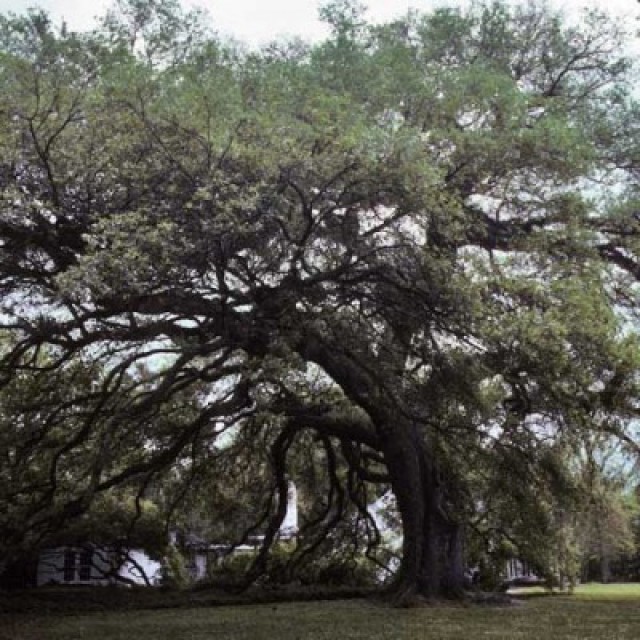COMMON NAME
Southern live oak
SCIENTIFIC NAME
Quercus virginiana
ALSO KNOWN AS
Virginia live oak
Plant family
Beech (Fagaceae)
Plant group
Broadleaf Evergreens
Willow oaks are found in much of the eastern United States and as far west as Texas and Oklahoma.They prefer stream sides and wet areas, but can also be found in upland areas. The shape of the leaves,which are long and skinny like willow-leaves, are what give this oak species its name. Willow oaks produce acorns in abundance and are an important food source for wildlife.
323 reports
104+
OBSERVERS
323+
OBSERVATIONS
Identification hints
There are several smaller evergreen oaks along the coastal plain. Southern live oak is unique in its large size, spreading branches, smooth oblong leather leaves with light colored undersides.The flowers are produced in catkins and the acorns are small and oblong with black tips.
Did you know?
Southern live oak is considered to be one of the "noblest trees in the world and virtually an emblem of the Old South." In many parts of the south, these trees are protected for public enjoyment. The acorns of southern live oaks are an important food source for many birds and mammals. This is a very fast growing tree and is therefore are often planted for erosion control. It also has potential for use in revegetating coal mine spoils. Properly cared for, southern live oaks can survive for centuries.
DISTRIBUTION IN TH U.S.
Alabama
,
Florida
,
Georgia
,
Louisiana
,
Mississippi
,
North Carolina
,
South Carolina
,
Texas
,
Utah
,
Virginia
HABITAT
Southern live oak is most commonly found on the lower coastal plain of the southeastern US from Virginia to eastern Texas.
ATTRIBUTES
Leaves
The leaves are thick, leathery, shiny, and dark green on top, gray or whitish below. The leaves are elliptical shaped, not lobed like most oaks.
Flowers
Small green inconspicuous flowers are produced when new leaves appear. Southern live oak has male and female flowers on the same tree. Germination occurs shortly after seed fall if the site is moist and warm.
Fruits
The acorn is about 1 in (2.5 cm) long with a turban-shaped cup, and is somewhat narrowed at the base. There are approximately 352 acorns per pound.
Bark
The bark is furrowed longitudinally. The bark and twigs are dark to light grayish color and become darker with age.
Bloom Time
Early spring.
See Menu
- 2021 Chicago Botanic Garden. All Rights Reserved.
-
Creative Commons
BY-NC-SA 4.0 - Terms of Use
- Privacy Policy
- Data Sharing and Citation Policies
- 2021 Chicago Botanic Garden. All Rights Reserved.



